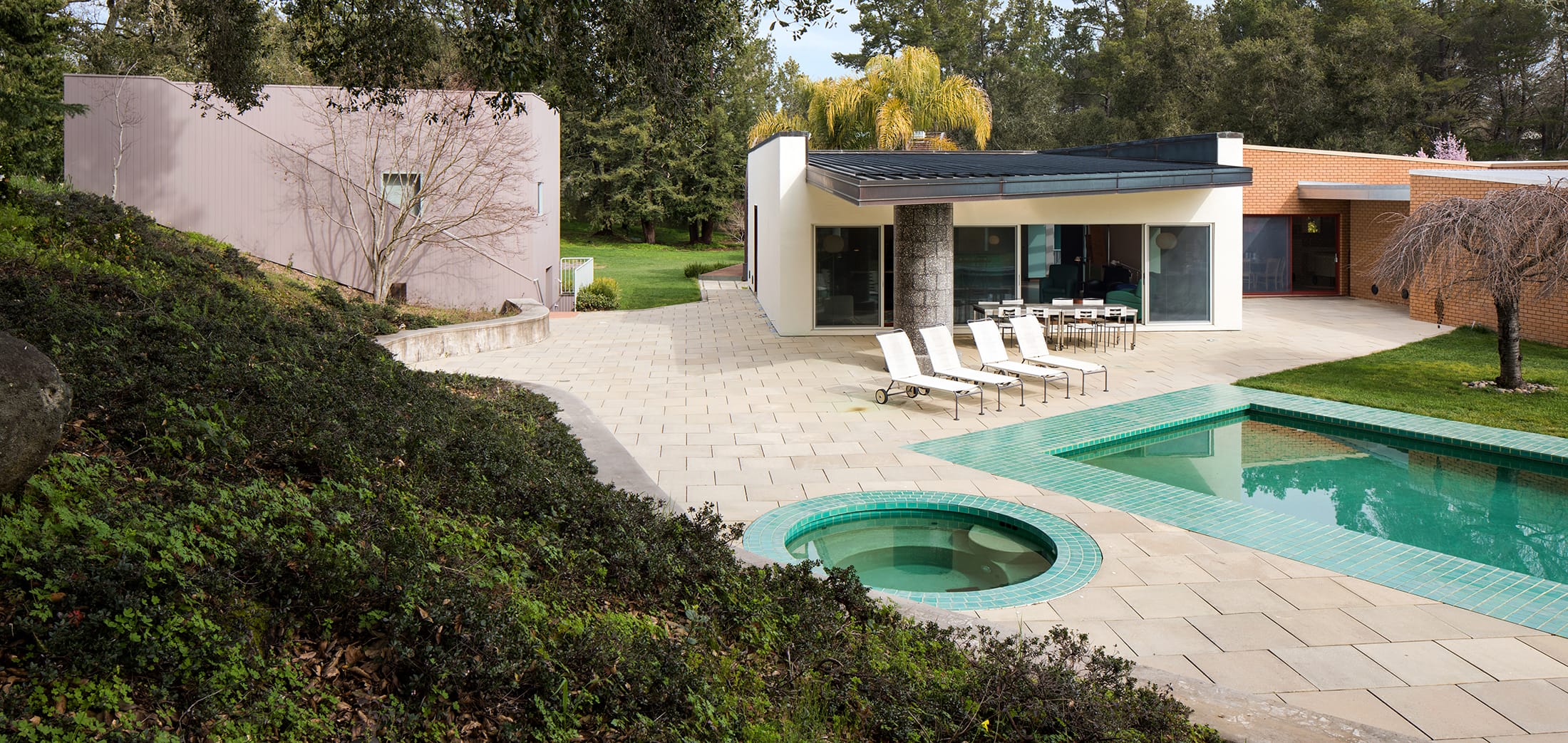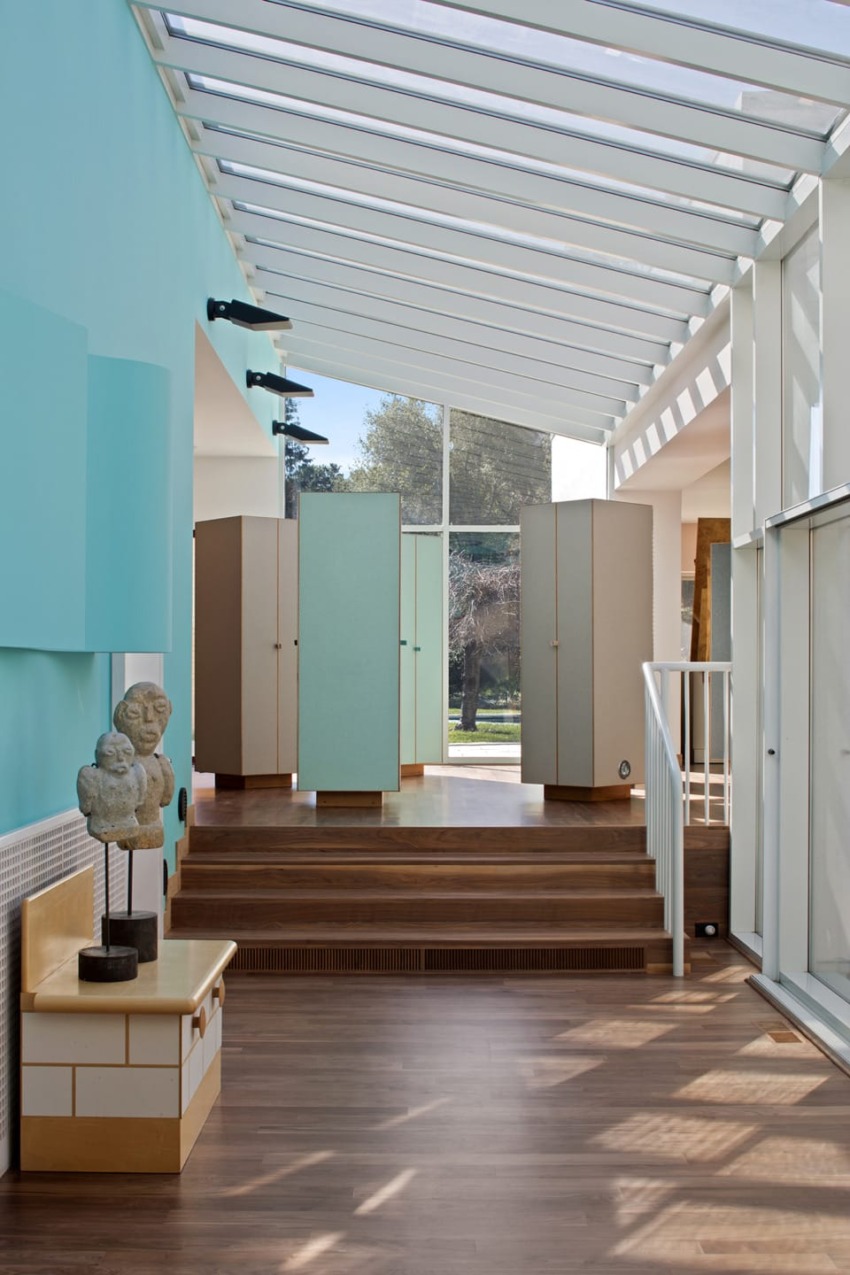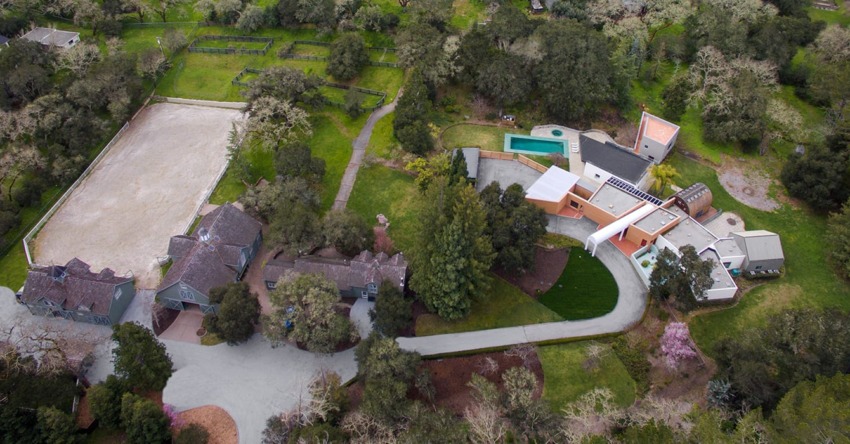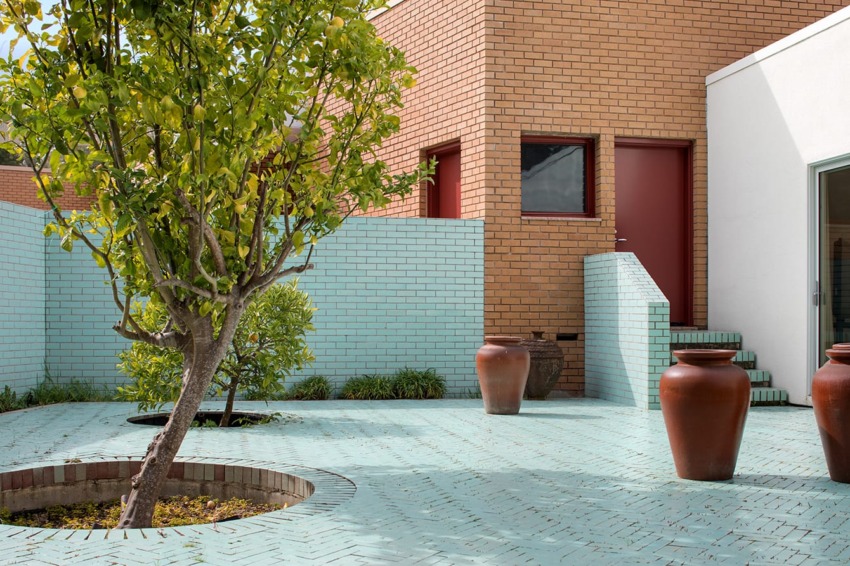Ettore Sottsass-Designed Home Hits the Market for $15 million
Tour an exuberant California compound crafted by the late iconoclast


During his prolific and decades-long career, the late postmodern industrial designer and architect Ettore Sottsass created just three homes in the United States. One of them, a sprawling Silicon Valley stunner, completed in 2000, is hitting the market for the first time. The master of Memphis—whose centennial is being celebrated this year with a host of exhibitions—conceived this four-bedroom retreat for Ideo founder David Kelley, whose wife was the catalyst for the project. “She said she had found the perfect property for herself—it was a horse property with a barn, a riding ring, and a stable,” Kelley wrote in Surface magazine last year, noting how the five-acre parcel lacked a substantial residence. “She said I could build the house I’d always wanted to build there.”

Kelley kicked off the design process by methodically compiling a large-format dossier of sorts. Next came a visit to the Milan-based Sottsass, a longtime friend, with the hope of going through the pages together. But the rabble-rousing Italian, who founded the design firm Sottsass Associati in the 1980s with scant regard for rules, had little use for the brief. “He kind of thumbed through it very casually and said, ‘This is a house about the past. Let’s build a house for the present.’”
Sottsass’s vision was a reimagined Mediterranean village, with six pavilions of differing shapes and sizes organized around a glass-topped atrium. Since the parcel was set in the quiet Bay Area enclave of Woodside, height and size restrictions dictated that all the volumes be constructed on a single level and not exceed roughly 8,250 square feet in total. Sottsass’s solution was to create a harmonious relationship with the surrounding landscape by building five outdoor terraces and a tile-paved pool court.

Among the geometric forms of the residence are a barrel-vaulted Quonset hut, which serves as an office, and a gabled structure that houses the bedrooms. For the interior, Sottsass broke up the kitchen, dining, and living areas with a series of angled, stand-alone cabinets that reach seven feet in height. And they are not the only Sottsass-designed interventions; the house is dotted with custom built-ins and furnishings, almost all of which were manufactured in Italy.

While Kelley admits the house has become too large for him to maintain, he hopes to find a proper steward for the landmark. “Sottsass is not the kind of world famous architect that every kid who works at Google wants to have, so passing it to the right person will be important for me.”